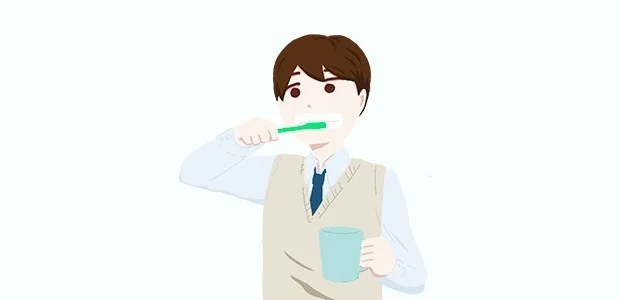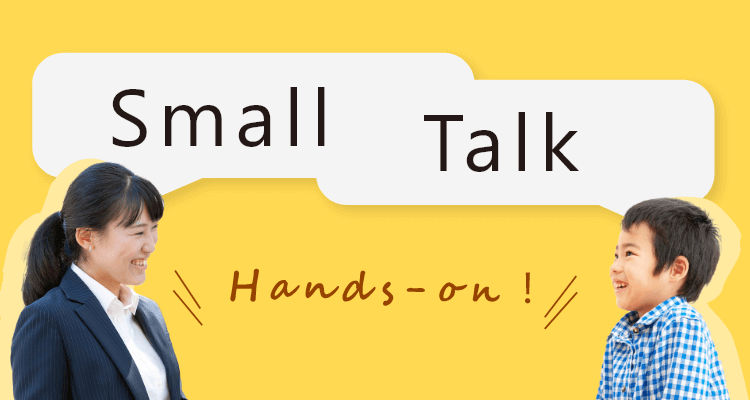中・高 #2-2: In the morning 朝、何をしますか?(後)
生徒が自ら考え、表現する力を高めたい。
生徒の発話を促すために教師はどのような発問をしたらよいのか?
ここでは、今日の授業に役立つ問いかけの例を毎週トピックとともにご紹介します。
中学3年生から高校1年生までの生徒を対象としたペアワークを促す展開例です。
前回は「In the morning」をトピックに、教師による話題提示と質問、生徒間でのインターアクション、そして全体での共有という流れの展開例を紹介しました。
今回はその流れの中でのさまざまな「意図」や「注意点」などに触れながら、生徒の反応を含めたさらなる展開例を示します。
【展開例】生徒自身の考えを伝え合い、相手が話したことをクラス全体に共有する
T: What time do you get up in the morning? Usually, I get up at six. It’s so hard for me to get up in the morning.
– What do you do just after you get up in the morning?
S1, what do you do just after you get up in the morning?S1: I eat breakfast.
T: Really? I don’t think so. You do something before that.
S1: What do I do?
T: You search for your glasses, don’t you?
S1: Oh, yes, I do.
T: What does your partner do just after he/she gets up?[生徒の反応を含めた展開例]
S1: She searches for her smartphone and checks it.
T: Uh-huh. For sure, everyone does it. Everyone, do you check your phone just after you get up?

<教師発問の意図>
What do you do just after you get up in the morning? という質問は難しいものではなく、誰でも答えられるものですが、多くの生徒は、あまり考えずに定番のI eat my breakfast. という答えで「逃げよう」とするでしょう。
しかし、これでは単なるパターン練習にしかなりません。生徒が自ら考えて答えることを促すために、ここで紹介したような「揺さぶる」質問をします。
「メガネを探す」「スマホをチェックする」などは、小ネタとして指導者が覚えていてよいものです。ほかにもさまざまな面白い答えがあり得るので、ぜひ考えてみてください。
T: – Do you brush your teeth before you eat breakfast? I brush my teeth after I eat breakfast, but I know some people brush their teeth before they eat breakfast.
– Do you brush your teeth before you eat breakfast?
S2, do you brush your teeth before you eat breakfast?S2: No, I don’t. I brush my teeth after I eat breakfast.
T: How about your partner? Does he/she brush his/her teeth before he/she eats breakfast?[生徒の反応を含めた展開例]
S2: He brushes his teeth before he eats breakfast.
T: O.K, everyone, how many of you brush your teeth after you eat breakfast? Raise your hand if you brush your teeth after you eat breakfast.

<教師発問の意図>
Do you brush your teeth before you eat breakfast? という質問は、Yes/Noで答えられるシンプルなもので、生徒はそれぞれ答えを持っています。多くの生徒は「食後」と答えるでしょうが、「食前」と答える生徒も少なからずいると思います。
また、なかには「食前食後」に歯を磨くものもいます。このようなやり取りなら、生徒は英語で話していることを忘れて積極的に参加するのではないでしょうか?
やり取りをmeaningfulなものにすることを心掛けましょう。やり取りを全体で共有するために、例に示したように全体に問い掛けることも有効です。
なお、この質問は、Do you brush your teeth before you wash your face? と言い換えてもよいでしょう。
T: How many times do you brush your teeth a day? I brush my teeth after I eat breakfast and just before I go to bed.
– How many times do you brush your teeth a day?
T: S3, how many times do you brush your teeth a day?[生徒の反応を含めた展開例]
T: S3, how many times do you brush your teeth a day?
S3: I brush my teeth twice a day.
T: Then, how many times does your partner brush his/her teeth a day?
S3: He brushes his teeth three times a day.
T: Oh, three times a day! I have an advice. If you brush your teeth too much, it might damage your teeth. So, be careful. You should not brush your teeth too much.

<教師発問の意図>
中学3年生や高校1年生でも How many times do you … a day? という質問を使ってのやり取りはあまり多く経験していないかも知れませんね。授業冒頭のSmall Talkでこの表現を扱うことで、「復習」や「定着」を図ることができます。
ここで紹介した展開例のように、①ペアでのやり取り、②指導者とのやり取り、③全体での共有という流れのなかでは、同じ表現が繰り返して使われます。「使って覚える」- learn through doing の1つの例と言えるでしょう。
やり取りの「中身」と「学ばせたい、定着させたい表現」のバランスを取るのは簡単ではありませんが、それが正に指導者としての腕の見せどころでもあります。
今回は「In the morning」をトピックとした展開例をご紹介しました。コミュニケーションの目的や場面、状況に応じたやり取り、つまり「コンテクストが設定されたやり取り」を通じて、生徒がコミュニケーションに積極的に向かう態度を引き出していきたいものです。



